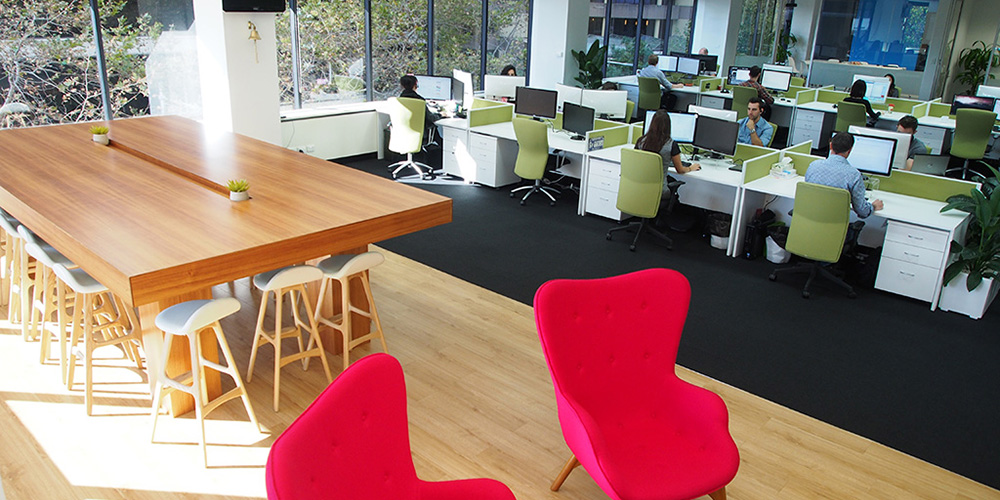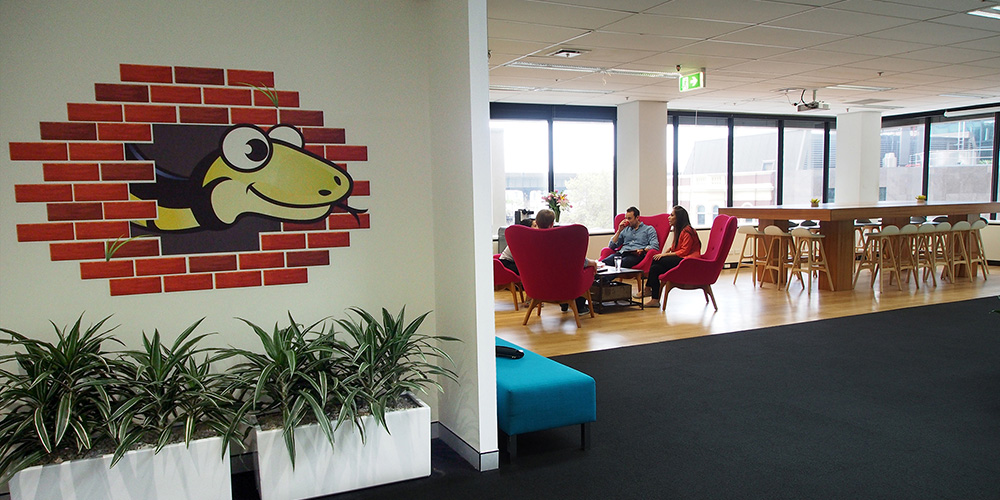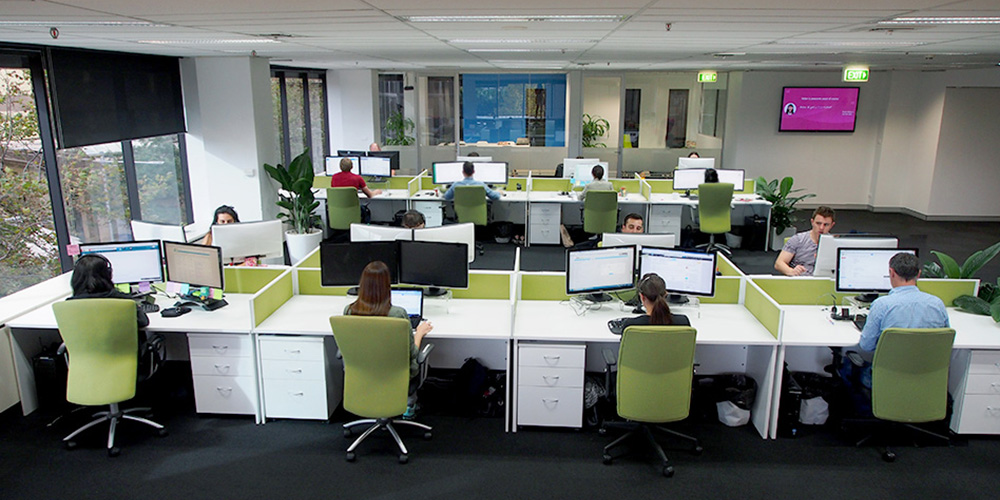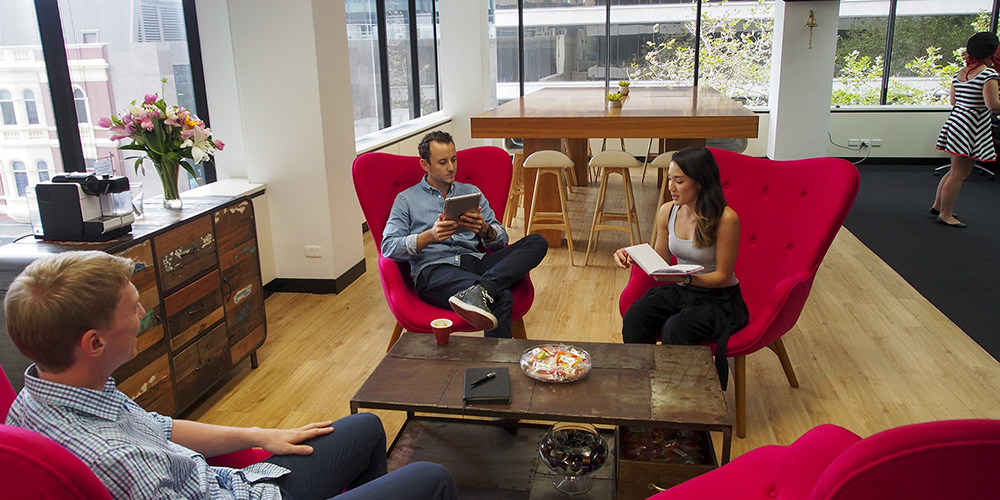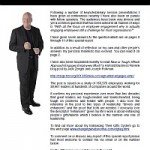This is the ninth in a series of Ten Keys to High Performing Teams. This article looks at the role the physical environment plays in workplace performance. The article is a guest post by workplace design consultant Anetta Pizag, founder of Pizag.
‘One of the best business decisions I’ve made was this office. It had a huge impact on sales, staff attraction, and – definitely – on productivity. Everyone here loves working here, and they tell me that all the time. In 10 years I’ve never had a staff member resign. It’s a testament to the environment that we have here.’
These are the words of Brett Iredale, CEO of JobAdder, a Sydney based software company. He’s one of those business leaders who understand the crucial role of the physical workplace in achieving success in business.
Space matters
We often hear that ‘our external environment strongly influences our internal one’. But that can be understood in various ways. My key message is that we need to be mindful not only of our social but also our physical environment.
Research shows:
- People in well-designed offices are twice as committed and three times as satisfied as those in sub-optimal environments
- Businesses with well-designed offices are nearly twice as innovative, and twice as good at attracting and retaining the best talent as those with poorly designed spaces
- However, only 1 in 10 Australian workers feel that their office is conducive to creativity
A typical company spends almost 10 times more on wages than on office space. So spending a little to create an environment that enhances rather than limits performance makes good financial sense.
In my professional work I see day after day how organisations grow or go downhill, partially due to the spaces they inhabit. But we also know from personal experience that space is important and that it impacts how we feel and behave. Just think about the places where you go to recharge, to connect with friends or to develop a deeper connection with yourself.
The old notion that the workplace is just a vessel for business activity is changing, along with the way workplaces are designed an operated. Increasingly offices are being built or upgraded to provide better working experiences, helping people connect with their work and to perform better.
But there is a long way to go. The vast majority of offices still fall short, perhaps being dysfunctional, uninspiring or unhealthy. This compromises engagement and performance.
Every business and every team is unique. There are no universal solutions for creating an optimal environment, so blindly copying design features that seem to work for others is a mistake. Before even thinking about the design, we need to identify the problems we want to solve and the objectives we need to meet.
Covering the basics
As a design consultant, I ask my clients and their teams:
- Why are you in business? What are your goals and values?
- What are your products or services, and the steps of delivery?
- How do you maintain your focus and energy? What are the distractions?
- What are the different skills, personalities and tasks in the mix?
- What motivates you to give your best to your organisation?
- What makes you feel you belong to the team?
- What’s changing around your work and your industry?
These questions touch on 7 key areas which my research into successful businesses indicated were important for workplace design. Focusing on these areas is a kind of recipe – a powerful guide for creating high-performance workplaces.
The key qualities of workplace design
Let me illustrate this through JobAdder, one of the companies I researched. The quotes are from my interview with Brett Iredale, their CEO.
1. Visionary space for a visionary business
The workplace says a lot about its users. Offices that are congruent with the DNA of the organisation – reflecting its purpose and brand – tend to motivate employees, align teams and attract the right opportunities.
JobAdder’s brand and slogan is ‘simplicity’, and this philosophy directly ties into the design of their office: ‘We design recruitment software that’s easy to use, clean and simple. The user interface is white, spacious and clean, because people like to use products like that. And our office also looks like that. Our competitors’ offices, processes, sales – the whole experience – are cluttered and confusing. So we distinguish ourselves in the market just by being simple, easy, clean.’
2. Smart space for a smart business
When employees can easily access all the resources they need – including other people, information, work tools and technology – people communicate better and work more intelligently.
In JobAdder’s office, software and infrastructure were also set up in the spirit of simplicity, making communication and data-handling straightforward and very efficient. They decided to use only cloud-based software as well as file-sharing and phone systems. This has not only defined the way they work, but also made an amazing difference to the look and character of the office. Without server rooms, network cables, desk phones and piles of papers, the space is kept free of clutter.
Rather than adopting activity-based work (hot-desking), each person has their own desk. This is a small team, so people can easily interact without mixing them around.
3. Productive space for a productive business
To help employees be more present, focused and efficient, the workplace needs to minimise stress and distractions, and it needs to be comfortable.
The office was designed to be functional, easy to use and comfortable, helping staff concentrate on their work instead of distracting them. ‘I’ve been to offices with themed meeting rooms, with crazy bits of dysfunctional furniture and decorations, that were just uncomfortable and weird. What we are going for is: relaxed, easy and comfortable. Everything here has function and purpose.’
JobAdder also has a fully equipped gym and a space suitable for doing regular yoga and boxing classes. This is not just about staff benefits and health initiatives. Brett knows that exercise helps his staff be more energised and productive.
It is an open office, so when people want to work uninterrupted they can either move into one of the enclosed rooms, or put their headphones on. ‘We have a bit of a headphone policy. Basically the rule is that if someone’s got their headphones on you leave them alone. That works really well.’
4. Diverse space for a diverse business
Diversity is a great asset, so workplaces should cater to people of different skills, age, personality and work styles.
Every room at JobAdder has different furnishing and ambience, so staff can chose the right environment for them to get into the right head-space. Brett says: ‘They just come and close themselves in this room [the lounge and meeting room], or the raining room next door. They can work out there in the beer-garden as well: we have wireless here. Often in summer time someone will just take a laptop and sit at the bar and work out there.’
5. Caring space for a caring business
Employees are more likely to feel valued and cared about in work environments that are attractive, healthy and enjoyable.
‘It’s really important that we have a nice place, where we like to come, that’s why I started my company’.
When moving office, Brett looked for an open clean space with windows all the way around, and with a decent outdoor area (which is almost impossible to get in Sydney). It also needed to be spacious enough to accommodate the training room, the gym and the lounge.
‘We’ve got lots and lots of plants. That brings a bit of an organic feel. It was amazing the difference it made; when we were working without the plants, it was quite hard. When the pants went in, everyone was just happier, straightaway.’
All these cost money, but are worthwhile investments: ‘We work harder, because we care about what we have here. If people like and value what they have, they work harder to keep it’.
6. Engaging space for an engaging business
Culture is what makes a workplace a great place to work. An office that supports a thriving culture with trusting relationships is a powerful tool for attracting and retaining talent and for enhancing engagement and teamwork.
JobAdder’s culture balances hard work and play, so Brett wanted to create a place that’s neither a sea of cubicles nor a theme park. ‘I have experimented with both ends of the spectrum. I came from very traditional corporate environment and I hated going to work. My first reaction was to go to the extreme[opposite] direction where there are no rules and it’s anarchy… But then we brought it back a bit, to a midway point.’
‘We work hard and play hard,’ says Brett. ‘At least once a week we either get together in our beer-garden or go out. We do things like skydiving together or going away for a weekend.’
It can be hard to attract women to work in software companies and Brett has been conscious about creating a culture and environment that appeals to both men and women. Part of that is around work-life balance. Family members, along with dogs and cats are regular visitors to the office, and there is space for them to feel welcome as a part of the JobAdder extended family.
7. Changing space for a changing business
Environments that are adapted to the changing needs of a business make it easy for people to constantly evolve the way they work in response to new opportunities and challenges.
JobAdder’s office is a diverse, flexible and adaptable space that tries to impose no limitation on the way employees approach work. The design is the result of years of learning and experimenting. Brett does not see the office space as a finished product, but as a ‘tool’ that can and should be developed at every opportunity.
‘I started my business 12 years ago. This is my seventh office and the progression from our first office to this one has been substantial. Each office has got progressively better. And the next office will be better again because we have learnt more lessons from this one.’
Anetta Pizag
This blog was first published on pizag.com.au

